Geoscience Reference
In-Depth Information
(A)
(B)
(C)
10
Ch
10
10
P
P
G
Ch
5
Te
5
5
Ch
0
cm
0
cm
0
cm
(D)
(E)
(F)
10
10
15
Th
10
5
5
5
P
P
D
G
G
G
Ch
0
cm
0
cm
0
cm
Fig. 7.
Mud-dominated heterolithics and pinstripe-laminated mudstone in the Smørbukk field. Mud-dominated heterolithics
(Facies 5.3.1): (A) Lenticularly-bedded ripple cross-laminated sandstone, with round-crested ripples interbedded with 2 cm
to 3 cm thick laminated to structureless mudstone (white arrows) and homogeneous mudstones. Low-intensity bioturbation
(BI 1) includes
Chondrites
(
Ch
) and
Planolites
(
P
); (B) Round-crested ripples showing vertical gradation from fine-grained to
very fine-grained sandstone into very thick homogeneous mudstone (white arrow). Sparse Chondrites (Ch) (BI 1) in mud-
stone. Mud-dominated heterolithics (Facies 5.3.2): (C) Lenticularly-bedded current-dominated heterolithics showing bimodal
coarse-grained to medium-grained sandstone and ripple cross-laminated fine-grained sandstone. Bioturbation intensity is
low (BI 1) and occurs mainly in the fine-grained sandstones. The ichnogenera present are
Planolites
(
P
),
Teichichnus
(
Te
) and
Glossifungites
(
G
); (D) Ripple cross-laminated fine-grained sandstone lenses showing organic-rich laminae on foresets,
interbedded with thick homogeneous mudstone showing dispersed very fine sand grains and organic matter that are inter-
preted as fluid-mud deposits. The low-intensity bioturbation (BI 1) includes
Planolites
(
P
) and rare
Thalassinoides
(
Th
);
(E) Thick-bedded mudstones showing vertical, top-down bioturbation dominated by
Diplocraterion
(
D
) and
Glossifungites
(
G
). Pinstripe-laminated mudstones (Facies 7): (F) Thin very fine-grained sandstone lenses and laminae interbedded with
sparsely bioturbated laminated mudstone. Bioturbation consists mainly in
Chondrites
(
Ch
) and
Planolites
(
P
).
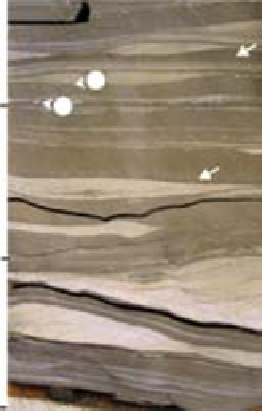
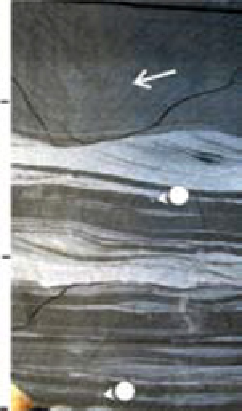

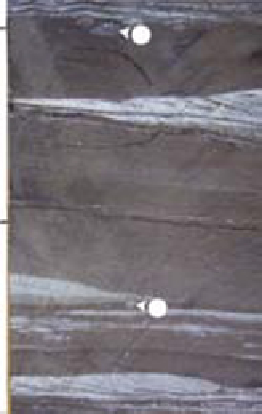
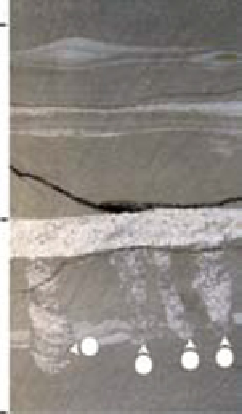
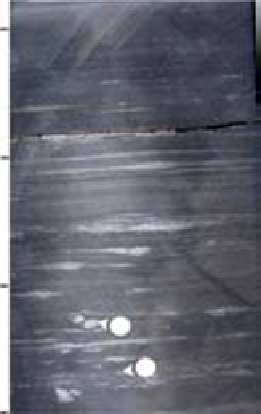
Search WWH ::

Custom Search